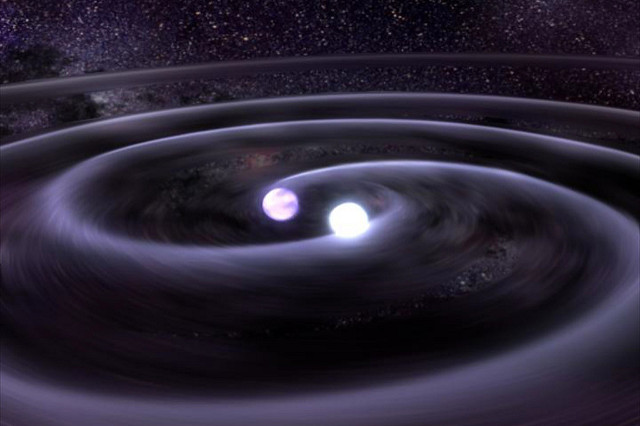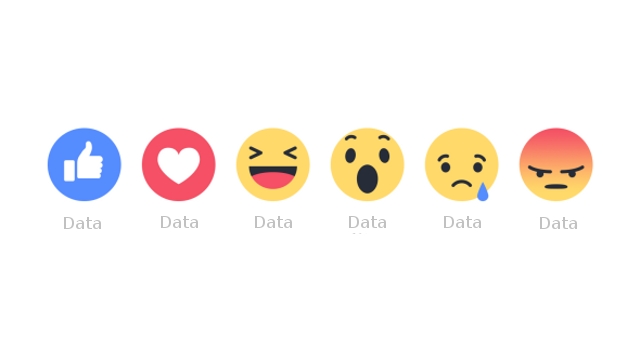
This week we’ve got the lowdown on Facebook’s new data acquisition tool reactions buttons, Apple’s latest comeback in its argument with the FBI, and the latest news on what Fast Radio Bursts aren’t (and what they might be). Check it out!
Like/Love/Haha/Wow/Sad/Angry

This week’s big tech news (sad though that may be) was Facebook’s introduction of “reactions.” No longer limited to simply “liking” statuses, shared links, and ads “sponsored content,” users of the massive social media site can now react to them in six ways — none of which are “dislike.” The way they came up with it is pretty ingenious. In a piece on Wednesday’s Marketplace podcast (24-2-2016) they had a clip of Tom Allison, a senior engineer at Facebook, who explained: “In particular they looked at short comments, so these one to three word comments that people leave on posts, that are things like “awesome!” “yay!” or “congratulations!” It turns out that when you put them into categories, there are only four or five types of comments outside of “like” that people were leaving on posts.” According to tech correspondent Molly Wood, also in the same podcast, the “like” is clicked 6 billion times a day, which means it’s generating all sorts of data for the company (and its sponsors) about how best to reach you — the consumer humble Facebook user. So why isn’t there a “dislike” button? My guess is that if there were, that’d be the only one anyone ever used for ads. And that wouldn’t be terribly useful (or profitable) data. Slate’s Will Oremus has more on the story.
Apple vs. FBI

The fight over unlocking iPhones continued this week as Apple filed a “motion to vacate” the FBI’s “All Writs Act” order compelling it to hack into the iPhone of one of the San Bernardino shooters on Thursday. Calling the FBI’s demands an “unconstitutional” overreach of governmental power, the filing argues (among other things) that if they were to follow the order, the precedent set would be chilling. From the filing:
“The government says: “Just this once” and “Just this phone.” But the government knows those statements are not true; indeed the government has filed multiple other applications for similar orders, some of which are pending in other courts. And as news of this Court’s order broke last week, state and local officials publicly declared their intent to use the proposed operating system to open hundreds of other seized devices—in cases having nothing to do with terrorism. If this order is permitted to stand, it will only be a matter of days before some other prosecutor, in some other important case, before some other judge, seeks a similar order using this case as precedent. Once the floodgates open, they cannot be closed, and the device security that Apple has worked so tirelessly to achieve will be unwound without so much as a congressional vote.“
As a digital native and proponent of democracy, I have to be a proponent of strong encryption. If the walls we build to protect us from anti-democratic, anti-freedom “enemies” come with backdoors made “just for friends,” you can be damned sure any enemies will find a way to go through those doors too. The filing is set to be heard in court March 22, and you can read the full filing here.
Oh, and in related news, Apple’s trying to technologically close the loophole the FBI wants it to use, so that even if the FBI wins, they wimply won’t be able to comply with their wishes in future versions of the phone.
Finding FRBs
Two spiraling neutron stars and their resulting gravity waves
Fast Radio Bursts, or FRBs, are one of the more mysterious signals astronomers have been seeing in the night sky. Lasting only tiny fractions of a second, but emitting exceptional amounts of energy, what causes them is still unknown. But, thanks to a recently observed and studied FRB, scientists can now say a few things about what they aren’t. The location of origin of one of these signals, FRB150418 — detected (as encoded in its name) 2015 on April (04) 18th — has been sussed out for the very first time. This particular one didn’t come from close by: it’s from an elliptical galaxy six billion light years away. Also, because elliptical galaxies are quite old, they’ve been able to rule out supernovae as the source. Supernovae tend to be the result of the early death of much younger stars and hence aren’t present in older galaxies. But, this suggests that it might be something else. What’s left after supernovae are (often) neutron stars, which essentially last forever and are therefore much more common in older galaxies. Scientists are now positing that what me might be seeing are two neutron stars colliding (like in the image above, made from this video), which is both (a) very cool and (b) might be something we could corroborate with gravitational wave data in the coming years, so stay tuned! For more on the discovery, and a great explanation of a correlated discovery about “missing mass” in the universe, check out Phil Plait’s Bad Astronomy blog.
ICYMI
In case you didn’t keep up with what we got up to here this week, I present to you This (particular) Week In Tomorrow in handy point form:
- On Monday, I pointed out that there are gravity wave “truther” (because of course there are)
- On Tuesday, I talked about the concept of “having it all” as a parent (and generally why you can’t because of the patriarchy)
- On Wednesday, I took umbrage at one particular Catholic archbishops stand against the Girl Scouts (for crying out loud)
- On Thursday, I wrote an open letter to Bernie Sanders because he supports GMO labeling and that’s absurd, and
- On Friday, I posted an ad for laundry detergent because it’s nicely feminist and we like to encourage that sort of thing around here
If you missed any or all of the above, well, now you don’t have to!
Best of the Rest
And, because I don’t *actually* have all the time in the world, here’s your weekly linkspam, in case you do!
- We’ve found a new possible dwarf planet called 2015 KH162 (such a sexy name) that’s probably big enough to be spherical
- Spotify’s moving all its data to Google’s servers, fueling talk of an acquisition
- Oregon Statue University has made a brilliant, robust, and now marketable blue pigment (by accident, of course)
- Netflix is teaming up with IG to make an original anime (but probably not in 2016), and
- I just really like this artistic map of Mars, and am trying to resist buying it in multiple forms
I bid you adieu for the day with this wonderful video of Boston Dynamics’s latest bipedal robot, which seems a little sad when you take away its box.
That’s all for this week. Remember, I only get paid in my own (and your) enthusiasm, so please like This Week In Tomorrow on Facebook, follow me on Twitter @TWITomorrow, and tell your friends about the site! Have a great week.
